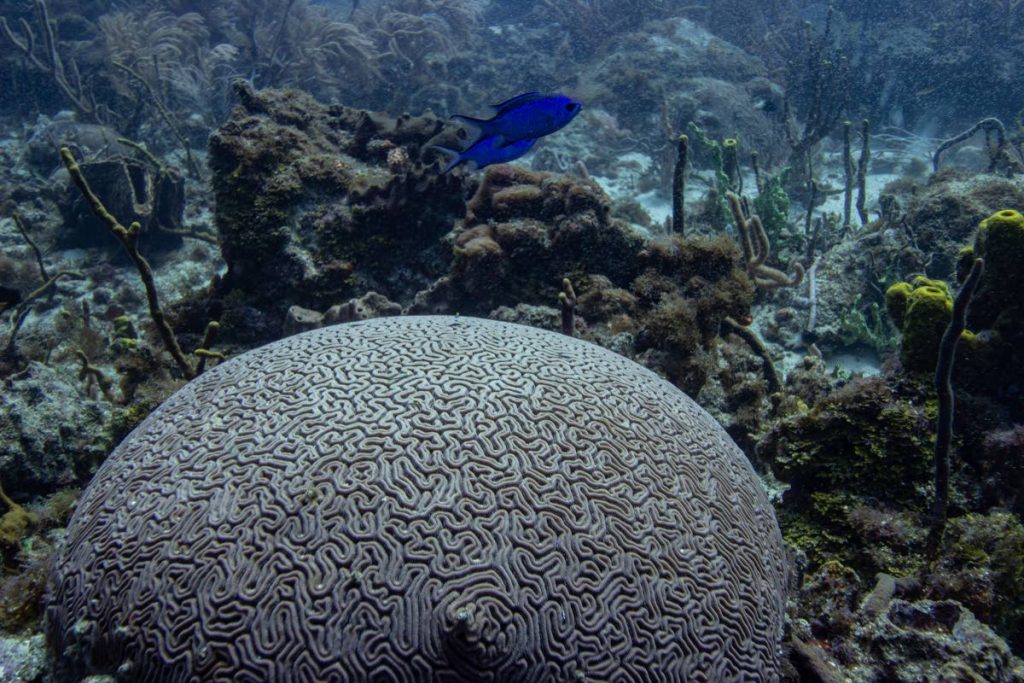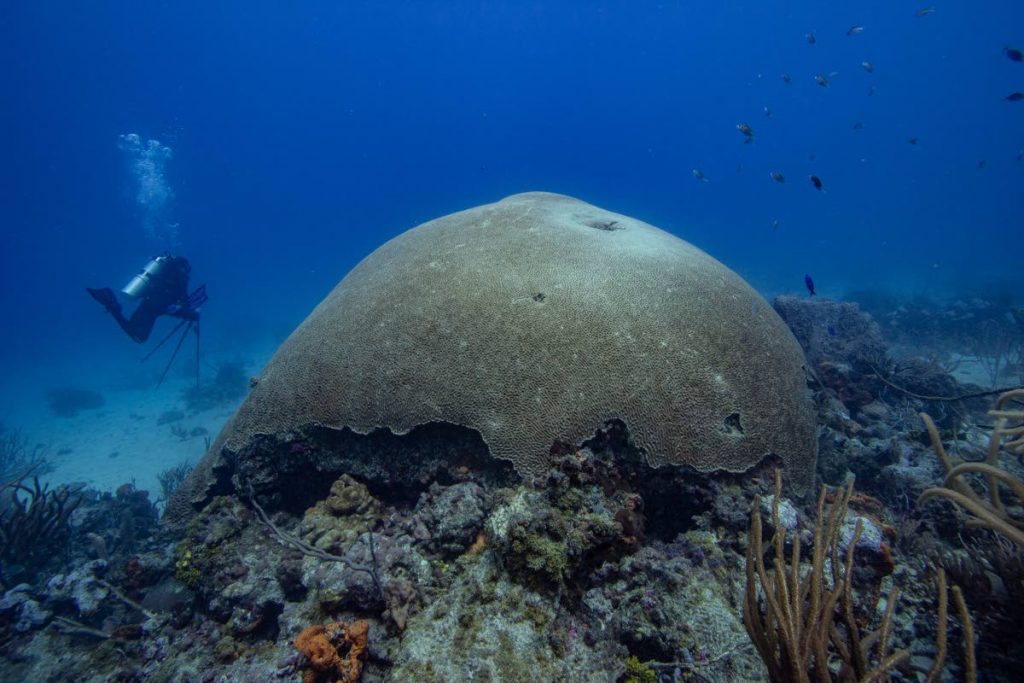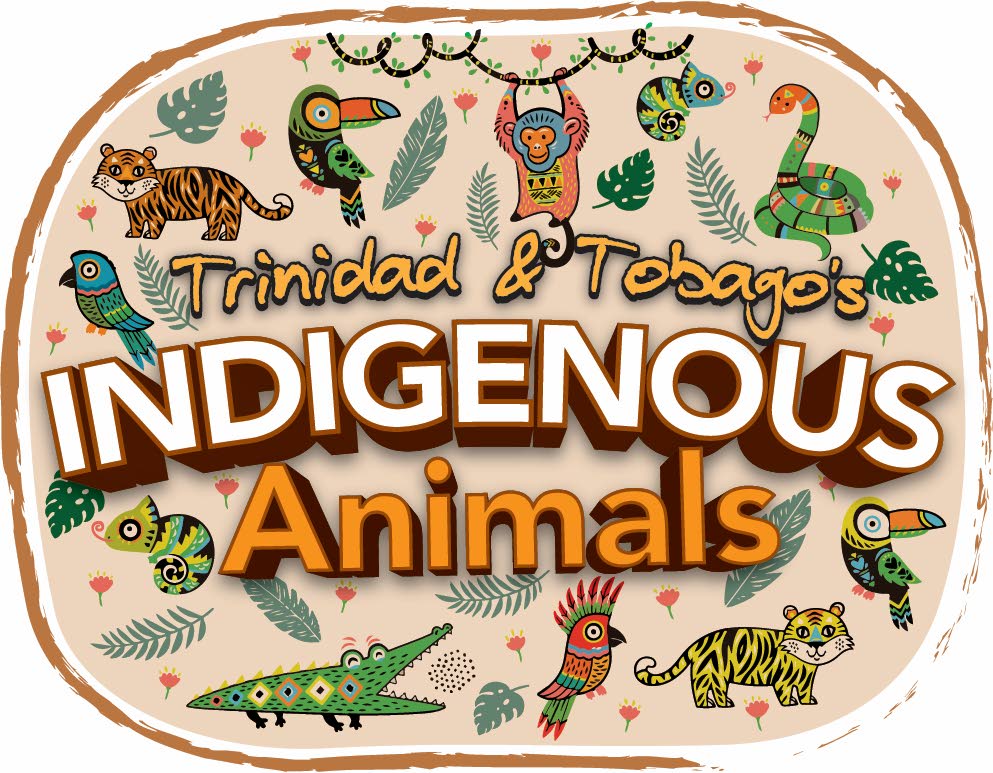Tobago's boulder brain coral, one of the world's largest

Have you ever looked at a coral and wondered exactly what you’re looking at?
If you’ve ever been confused trying to understand these marvellous structures in the sea, you are not alone.
In fact, scientists long ago had the same problem as they couldn’t quite figure out what corals were.
Marine biologist Lanya Fanovich told Newsday Kids, “Scientists were wondering whether or not it was a type of stone or mineral…if it was a plant or an animal.
“At one point in time, they were even classifying corals as a lithophyte (plant that grows on rocks) and then a zoophyte (plantlike animal)."
After many years of research, Fanovich said corals were finally classified as living animals.
When you look at a coral, the structure that you see is actually made up of hundreds of thousands of tiny organisms called coral polyps. Coral polyps are similar to the jellyfish. Like jellyfish, coral polyps have soft bodies and stinging tentacles.

Coral polyps often assemble to form a colony and in doing so, they secrete calcium carbonate – the same mineral that makes up stalactites and stalagmites in caves – to build a home which is the coral structure that is seen.
These coral colonies can take anywhere from hundreds to thousands of years to form. They can also take on many different looks leading to many different types of corals.
The boulder brain coral (
Colpophyllia natans) is one type.
But did you know that Tobago is home to one of the largest boulder brain corals in the world?
“What is special about the corals we have in TT is the fact that it is reputed to be the largest brain coral in the western hemisphere,” Fanovich told Newsday Kids.
The large boulder brain coral is found in Kelleston Drain which is located off Tobago’s northeast coast near the island of Little Tobago
It’s estimated to be five metres across and three metres high.
“The boulder brain coral has a very slow growth rate as they grow up to one centimetre a year,” Fanovich said.
It has been estimated that Tobago’s boulder brain coral has been growing for more than 200 years.
But while corals are impressive structures, they are also very fragile.
Today, corals around the world like Tobago’s boulder brain coral are under threat from climate change induced coral bleaching.

Fanovich explained that microscopic algae called zooxanthellae live inside coral polyps and have a symbiotic relationship with them.
“These microscopic algae are responsible for providing these coral polyps with as much as 80 per cent of their energy or food through the process of photosynthesis.
“So, the algae act like plants using sugars which the coral polyps are able to absorb to give themselves energy.”
Coral polyps are translucent (clear) organisms but there are many different coloured zooxanthellae.
So apart from providing coral polyps with nutrition, zooxanthellae also give these translucent coral polyps colour when they live inside them.
The warming of the earth’s seas due to climate change is stressful to coral polyps and makes them expel the zooxanthellae.
“When sea temperatures remain high for long periods of time, it causes the coral to bleach.
“With coral bleaching, the corals become very stressed and as a result, they expel the zooxanthellae from their bodies.
As expected, when coral polyps expel these zooxanthellae, they lose a large nutrition source and their colour.
When you see pictures of “bleached” corals without colour, you may either be looking at a structure with coral polyps that have no zooxanthellae or a structure with no polyps at all.
Apart from climate change induced bleaching, corals face threats from pollution which can alter the properties of their marine ecosystems.
People also damage corals when they touch them especially in countries where they are found in popular tourist beaches.


Comments
"Tobago’s boulder brain coral, one of the world’s largest"